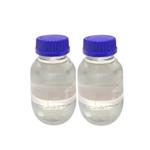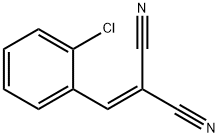[(2-Chlorophenyl)methylene]malononitrile: Burn Injury of Exposure and its Mechanisms
Apr 18,2024
General Description
[(2-Chlorophenyl)methylene]malononitrile, a widely used riot control agent, is under scrutiny for its safety profile and long-term effects. Exposure to this agent can result in burn injuries, characterized by symptoms like coughing, tearing eyes, and chest pain. Burn injuries from [(2-Chlorophenyl)methylene]malononitrile can range from minor to severe, necessitating treatments like debridement and skin grafting. The mechanisms of burn injury include flame burns from tear gas grenades, contact burns from hot canisters, and chemical burns from the chemical powder in the spray. These diverse mechanisms highlight the various ways in which [(2-Chlorophenyl)methylene]malononitrile exposure can lead to burn injuries.
![Figure 1. [(2-Chlorophenyl)methylene]malononitrile.png Figure 1. [(2-Chlorophenyl)methylene]malononitrile.png](/NewsImg/2024-04-10/6384836608173332802477739.jpg)
Figure 1. [(2-Chlorophenyl)methylene]malononitrile
![]()
![]() Overview
Overview
[(2-Chlorophenyl)methylene]malononitrile stands as one of the most widely used riot control agents globally. Riot control agents encompass various chemical substances, yet [(2-Chlorophenyl)methylene]malononitrile remains the most prevalent. Initially lauded for its swift onset, short-lived effects, and minimal side effects, recent data have brought into question its safety profile. While its mechanism of action remains incompletely understood, it is postulated that [(2-Chlorophenyl)methylene]malononitrile acts as an alkylating agent, interacting with various cellular components such as glutathione, sulfur-containing enzymes, proteins, and nucleic acids. Despite its purported benefits, concerns regarding the long-term effects and potential life-threatening consequences of [(2-Chlorophenyl)methylene]malononitrile exposure have emerged. Conflicting evidence exists regarding its mutagenic properties, further complicating the assessment of its safety. Additionally, the solvent used in [(2-Chlorophenyl)methylene]malononitrile formulations, methyl isobutyl ketone (MIBK), is deemed hazardous, yet comprehensive investigations into its health effects are lacking. In summary, [(2-Chlorophenyl)methylene]malononitrile gas, while historically favored for its efficacy in riot control, faces increasing scrutiny regarding its safety profile and long-term implications. 1
![]() Burn Injury
Burn Injury
Symptoms
[(2-Chlorophenyl)methylene]malononitrile exposure can result in a range of symptoms, particularly when it comes to burn injuries. Upon exposure to [(2-Chlorophenyl)methylene]malononitrile gas, individuals often experience typical symptoms such as coughing, tearing eyes, a runny nose, headache, shortness of breath, chest pain, sore and inflamed throat, and sometimes fever. In more severe cases, haemoptysis, or coughing up blood, may occur, although this is relatively rare and has not been extensively reported previously. In addition to these symptoms, burn injuries caused by [(2-Chlorophenyl)methylene]malononitrile can manifest in various ways. The burns are typically considered minor, affecting between 1% and 8% of the total body surface area (TBSA), with an average of 3%. They may range from small round patches, which are reactions to the chemical, to larger patches of flame burns. These burns are distributed across different anatomical sites, including the face, arms, hands, chest, abdomen, back, and lower limbs. The depth of these burns varies, with some being superficial, others partial thickness, and some deep partial thickness. Treatment for these burn injuries typically involves conservative management for minor burns, while more severe cases may require debridement and skin grafting. The management approach also includes removing contaminated clothing, showering, and applying simple saline-tulle gras dressings or silver sulphadiazine cream. Most patients recover within two weeks, with only a few visits to the clinic required for follow-up care. However, it's crucial to note that individuals with pre-existing conditions, such as asthma, may experience more severe symptoms and require additional monitoring and care. 2
Mechanisms
The mechanisms of burn injury associated with [(2-Chlorophenyl)methylene]malononitrile exposure are multifaceted and can be categorized into three main types based on the circumstances of exposure. Firstly, flame burns occur as a result of the explosion of tear gas grenades in proximity to individuals, leading to direct exposure to flames and subsequent thermal injury. Secondly, contact burns ensue when individuals come into direct contact with hot [(2-Chlorophenyl)methylene]malononitrile canisters, leading to thermal injury at the point of contact. Lastly, chemical burns occur due to the effects of the chemical powder within the canisters and spray, commonly referred to as mace. Chemicals within the spray can splash onto nearby victims' clothing and skin upon contact, resulting in chemical burns. These mechanisms underscore the diverse ways in which [(2-Chlorophenyl)methylene]malononitrile exposure can lead to burn injuries, ranging from direct thermal effects to chemical reactions with the skin and clothing. 2
Reference
1. Dimitroglou Y, Rachiotis G, Hadjichristodoulou C. Exposure to the riot control agent CS and potential health effects: a systematic review of the evidence. Int J Environ Res Public Health. 2015; 12(2): 1397-1411.
2. Zekri AM, King WW, Yeung R, Taylor WR. Acute mass burns caused by o-chlorobenzylidene malononitrile (CS) tear gas. Burns. 1995; 21(8): 586-589.
- Related articles
- Related Qustion
- [(2-Chlorophenyl)methylene]malononitrile: properties, applications and safety Oct 18, 2023
[(2-Chlorophenyl)methylene]malononitrile is widely used for riot control, causing severe irritation but with low lethality.
- Uses of CS Jan 12, 2022
CS, or o-chlorobenzylidene malononitrile, is the current major riot control agent (RCA) used by U.S. military forces. It was originally synthesized in 1928 by Corson and Stoughton, and the U.S. Army designated the compound ‘CS’ for the auth
4-Bromoisoindolin-1-one, synthesized from methyl 3-bromo-2-(bromomethyl)benzoate, holds significance in pharmaceutical synthesis for its tunable properties.....
Apr 18,2024APIArbutin exhibits different toxicity levels depending on the cell type and exposure time, but 1 mM is considered a boundary concentration between cytotoxicity and safety.....
Apr 18,2024Biochemical Engineeringo-Chlorobenzylidene malononitrile
2698-41-1You may like
o-Chlorobenzylidene malononitrile manufacturers
- 2-Chlorobenzylidenemalononitrile
-

- $1.00 / 1kg
- 2023-09-07
- CAS:2698-41-1
- Min. Order: 1kg
- Purity: 99%
- Supply Ability: 20tons
- 2-Chlorobenzylidenemalononitrile
-

- $1.00 / 1BOU/Drum
- 2020-11-27
- CAS:2698-41-1
- Min. Order: 1KG
- Purity: 98%
- Supply Ability: 1kg
- CS gas
-

- $1.00 / 1KG
- 2020-02-01
- CAS:2698-41-1
- Min. Order: 1KG
- Purity: Min98% HPLC
- Supply Ability: G/KG/TON





